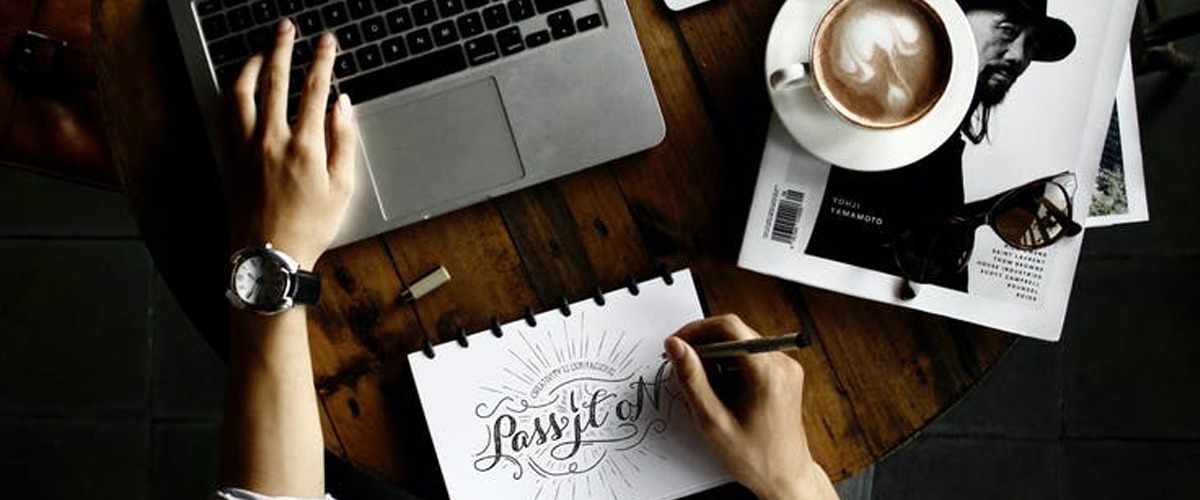When planning the design of your flyer ready to be distributed to households, you must ensure that it is eye-catching and relevant. You need a resident to see the flyer on their door mat and want to pick it up to read it. Often if it looks immediately like an advert, it will be thrown straight in the bin and not even looked at.
Images on your design need to be colourful and attractive, to gain the attention of the resident. When you walk into a shop on a hot day, you are often met with a fan of cool air. This is to make you relaxed as you walk through the store, meaning you are more likely to pick stuff up and buy them, even sometimes when you do not need them. This psychology should be applied to the design of your leaflet in the same way. The image, branding and layout of the leaflet is the first thing a resident will see. This should be attractive and positive, to make them relaxed and happy as they engage with the information.
The title is included in the initial impression of the leaflet and should catch the attention of the reader, from the door mat. The title should be large and clear to read. You could start with a question which causes the reader to want to read further through the information provided.
The flyer should be representing your brand and should scream out your business name just by the colours, fonts, and layout. Your brand colours should be used throughout the leaflet and the same font for writing and information.
You should never use a lot of different size fonts and all writing should be structured in an easy-to-read way. The last thing you want is for the reader to be confused exactly where to look at any one time. Using one size font throughout, besides titles and call-to-action’s, will give the reader direction on where to read through and move to next. Using larger font in the right places will also emphasize the right information that you need to stand out. You can also use different colours and boldness on these phrases and titles.
While maintaining your brand colours, you should consider the psychology behind the colours used throughout your advertisement. Colours will often gain a prescribed response from your reader, and you can use this to give an impression which is needed to be engaged with better. Some colours and the impressions they will give are shown below:
- Red – Excitement, Strength, Love, Energy.
- Orange – Confidence, Success, Bravery, Sociability.
- Yellow – Creativity, Happiness, Warmth, Cheer.
- Green – Nature, Healing, Freshness, Quality.
- Blue – Trust, Peace, Loyalty, Competence.
- Pink – Compassion, Sincerity, Sophistication, Sweet.
- Purple – Royalty, Luxury, Spirituality, Ambition.
- Brown – Dependable, Rugged, Trustworthy, Simple.
- Black – Formality, Dramatic, Sophistication, Security.
- White – Clean, Simplicity, Innocence, Honest.
Using this colour psychology, you can really engage with a potential customers emotions.
There is not much cost involved when choosing between single or double-sided design and print of a flyer, so we would always suggest having a double-sided flyer to distribute. This way, no matter which way the leaflet lands on a doormat, something is visible and not just a white page facing a would-be customer. A blank page facing up will often result in your flyer going into the bin.
Information on your leaflet should be clear and simple. You want to keep as little writing as possible on your flyer, to not overwhelm the reader. Less is more in these situations, but the information provided must be relevant and give enough of a description to sell a product or service.
You should always have a clear call to action, such as “visit our website” or “call now”. The entire leaflet design is left down if there is not an obvious way for the reader to find out more and get in touch. Your contact details should be easy to find on the leaflet and not in among a lot of writing. Icons of a phone or letter can be easy and clear to understand next to the contact information.
If you have a deal on the flyer, make sure to add an end date to encourage a rapid response from the resident. That way you can monitor more clearly the response you have gained from the leaflet drop.
Basic sales psychology should be used when trying to sell any product or service and this tactic should be included in the design of your leaflet. The colour psychology of the design and the attractiveness of your images are hugely important. The wording of all writing on the leaflet will also play a factor when trying to get a reader to engage.
The reader should start knowing little to nothing about the product you are offering, yet by the time they have finished reading, be convinced they need it. In fact, they should look back on their life and wonder how they ever made it this far without it. We want the flyer to elicit emotions that prompt readers to take the next step and convert into paying customers.
Using the correct wording in your information can provide this response from the resident.
The language you use has the potential to take product descriptions, landing pages and long form letters from interesting or useful, to unforgettable. It’s something all great salespeople know and exploit. They pepper their sentences with certain words that capture attention and elicit an emotional response.
If you do not think you are able to write a compelling paragraph that engages with a resident, then using a copywriter may be a useful option for you. Gaining an impactful piece of information will certainly give you a higher response rate than a quickly thought up sentence.

